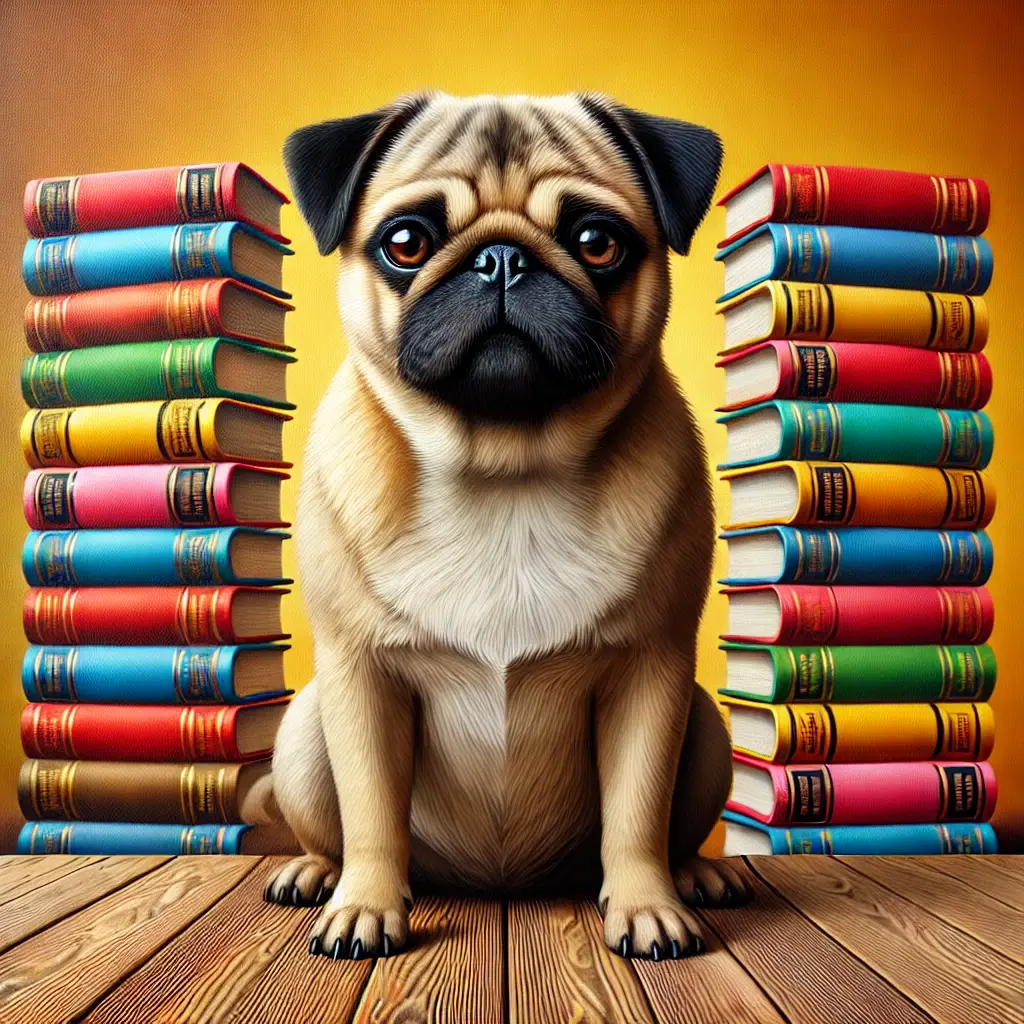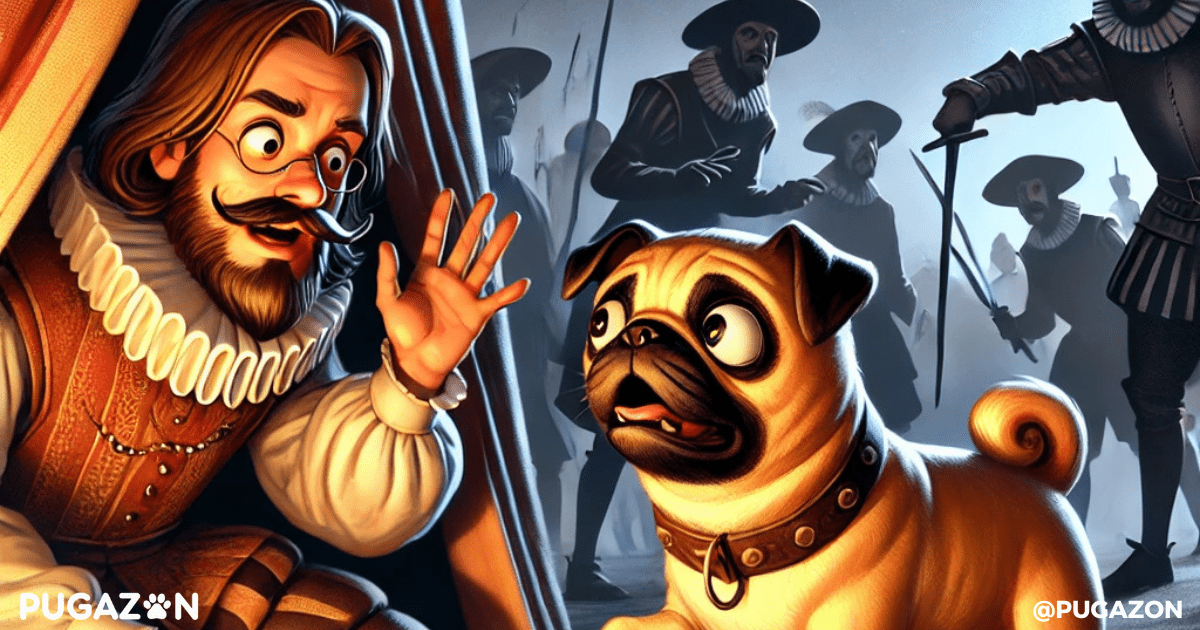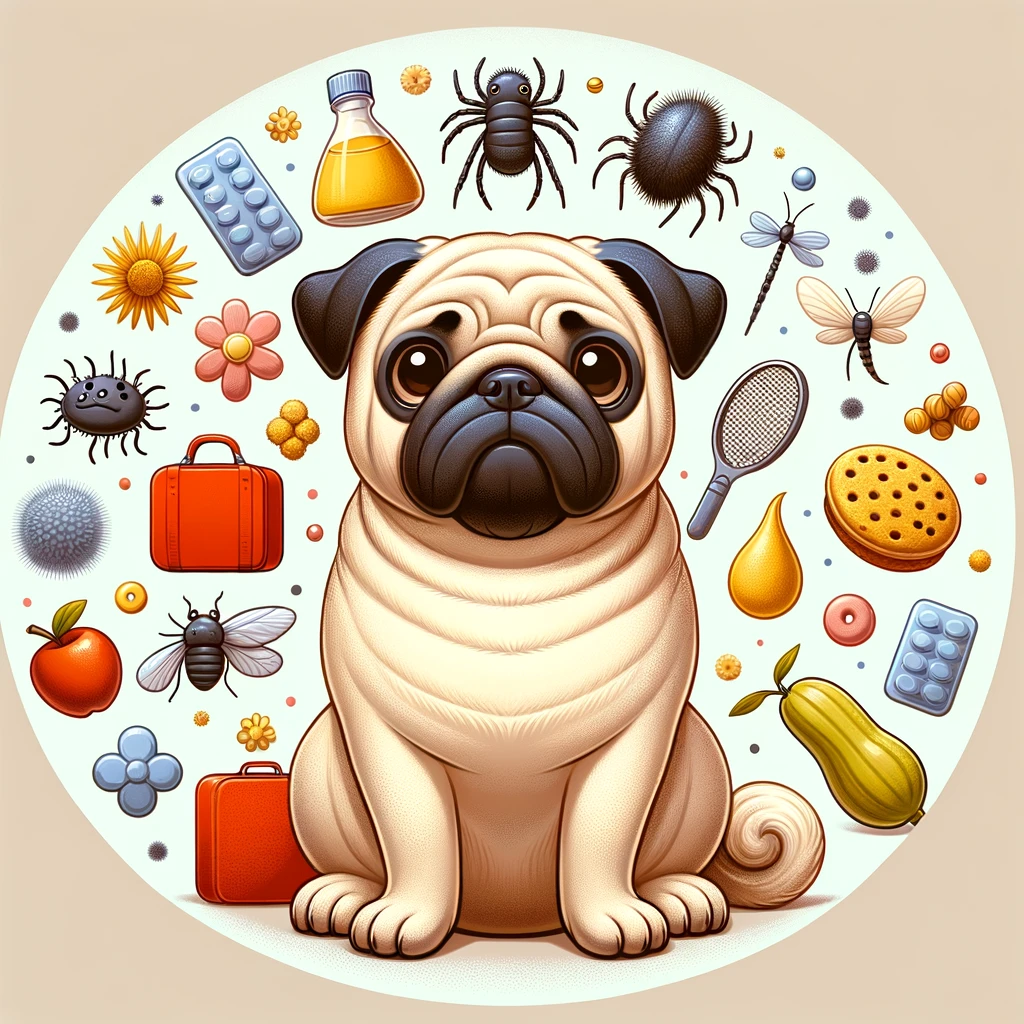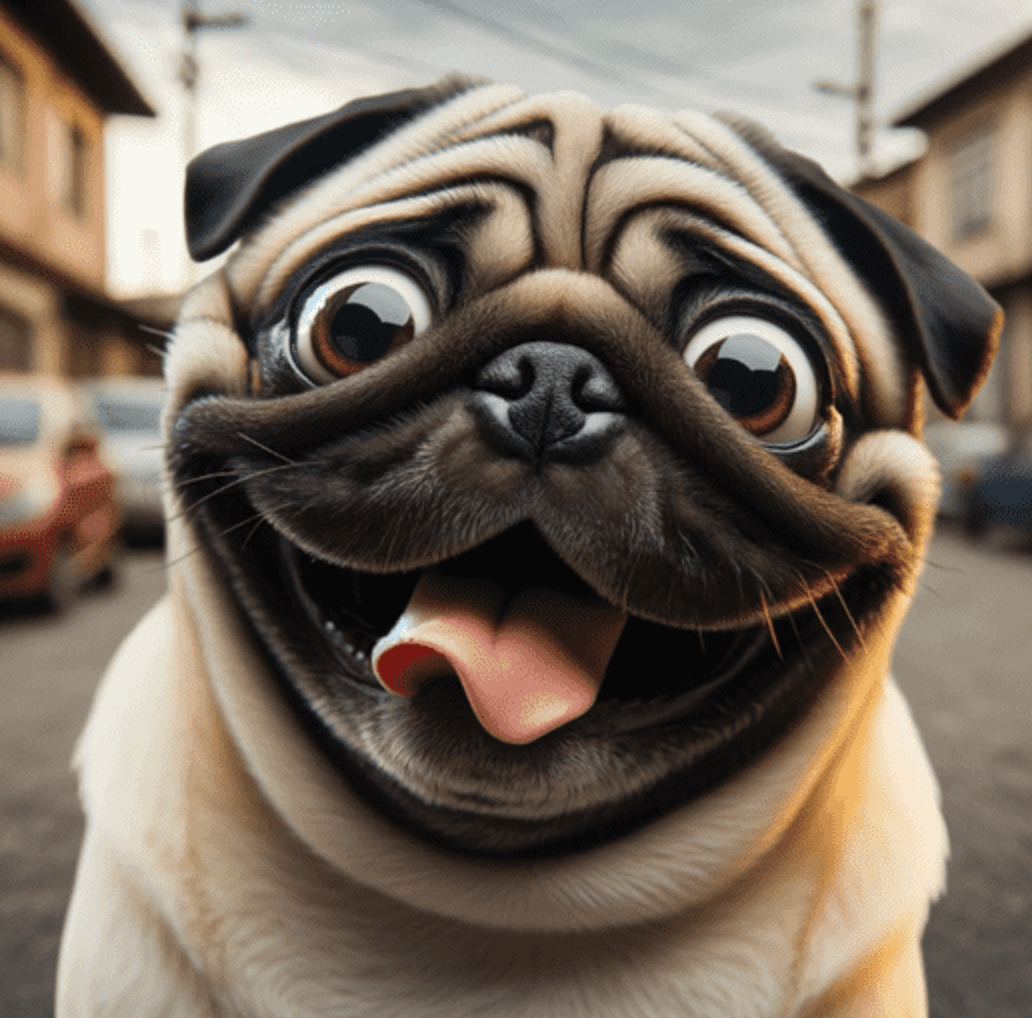- Chinese Pug Dog: A Comprehensive Guide to Origins, Characteristics, and Care
- The Historical Origins of the Chinese Pug Dog
- Physical Characteristics and Temperament of the Chinese Pug Dog
- Health Considerations for the Chinese Pug Dog
- Pugs in Ancient Chinese Society: Companions to the Elite
- The Pug’s Journey to the West: A New Beginning
- The Pug’s Influence on Western Art and Culture
- Pugs as Symbols of Status and Power
- The Role of Pugs in Art and Culture
- The Modern-Day Pug: A Cultural Icon
- Frequently Asked Questions About Chinese Pug Dogs
- What are the origins of the Chinese Pug Dog?
- How did Pugs make their way to Europe?
- Why are Pugs known for their distinctive facial features?
- Are Pugs a healthy breed given their unique physical characteristics?
- What is the cultural significance of Pugs in China?
- How did Pugs become popular on social media?
- What are the best care practices for a Chinese Pug Dog?
Chinese Pug Dog: A Comprehensive Guide to Origins, Characteristics, and Care
The Chinese Pug Dog, with its wrinkled face, expressive eyes, and distinctive snub-nose, has captivated dog lovers around the world for centuries. Known for their playful yet dignified demeanor, these small yet sturdy dogs have a rich and fascinating history that stretches back to ancient China. Today, pugs continue to win hearts with their unique blend of charm, loyalty, and a hint of stubbornness. In this comprehensive guide, we explore the origins, characteristics, and care needs of the Chinese Pug Dog, providing pug enthusiasts with everything they need to know to appreciate these delightful companions fully.
The Historical Origins of the Chinese Pug Dog
The Chinese Pug Dog boasts a storied past that is as colorful as its charming personality. Originating in ancient China, pugs were revered by emperors and nobles, often considered living symbols of wealth, prosperity, and divine favor. Their journey from the royal courts of China to becoming beloved pets worldwide is filled with fascinating tales of cultural significance, adaptation, and survival.
The Royal Roots of the Pug
Pugs were first bred in China over 2,000 years ago, during the Han Dynasty (206 BC to 220 AD), when they were known as “lo-sze.” These small, flat-faced dogs were highly valued by Chinese emperors, who considered them sacred animals. The emperors of China kept pugs as lap dogs, lavishing them with attention and care. The pugs lived a life of luxury, often sleeping on silk pillows and being guarded by soldiers.
Emperors saw pugs as symbols of good fortune, and it is said that their facial wrinkles were selectively bred to resemble the Chinese character for “prince.” As a result, only those within the imperial family or those with close ties to the court could own a pug. The breed’s unique appearance and loyal nature quickly made them status symbols, representing the grandeur and mystique of the Chinese imperial court.
Quote: “Pugs were not just pets; they were revered symbols of royalty, loyalty, and divine favor, their presence in the palace a testament to their esteemed position in society.” – Dr. Thomas Rowland, Historian.
The Journey to the West: From China to Europe
The pug’s voyage to the West began in the 16th century when Dutch traders, enchanted by these expressive dogs, brought them to Europe. Pugs quickly became the darlings of European nobility, starting with the House of Orange in the Netherlands. The breed’s loyalty and affectionate nature endeared them to Dutch royalty, and they were soon declared the official dog of the House of Orange. Pugs’ presence among the Dutch aristocracy soon spread to France, Spain, and Italy, captivating European courts with their unique charm.
Their popularity peaked in England during the reign of Queen Victoria, a noted dog lover who owned several pugs. Queen Victoria’s affection for pugs contributed significantly to their prominence in Britain, solidifying their reputation as pets of the elite. The breed’s journey from the East to the West symbolizes the global appeal of pugs and their adaptability to different cultures and climates.
Quote: “The pug’s transition from the courts of China to the stately homes of European nobility highlights its universal appeal, a testament to its unique charm and adaptability.” – Dr. Amanda Leroux, Canine Historian.
The Symbolic Significance of Pugs in Chinese Culture
In Chinese culture, pugs were more than just lapdogs; they were seen as protectors and symbols of good luck. Their wrinkles were considered auspicious, resembling characters that held significant meanings in Chinese script. Beyond their royal connections, pugs were also believed to possess mystical qualities, acting as spiritual guardians who could protect their owners from evil spirits. Their protective nature and endearing appearance led them to become cherished companions in Chinese households, where they were often depicted in art and literature as loyal friends to both the divine and the ordinary.
Art from the Ming Dynasty frequently portrays pugs sitting beside their royal masters or participating in religious ceremonies, underscoring their revered status. Carvings and jade statues from this period often include pugs as prominent symbols, further cementing their importance in Chinese spiritual and cultural life.
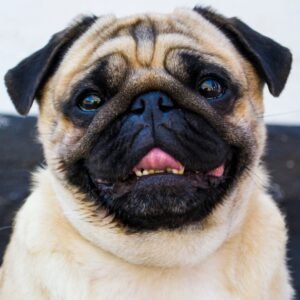
"The pug’s transition from the courts of China to the stately homes of European nobility highlights its universal appeal, a testament to its unique charm and adaptability."
- Dr. Amanda Leroux, Canine Historian.
Physical Characteristics and Temperament of the Chinese Pug Dog
The Chinese Pug Dog is celebrated for its distinctive appearance and charming personality. These dogs are known for their unique blend of physical traits and behaviors that make them one of the most recognizable and beloved breeds worldwide.
Distinctive Physical Traits
Pugs are compact, muscular dogs with a short, glossy coat that comes in several colors, including fawn, black, and silver. Their most notable feature is their wrinkled, flat face, which gives them a distinctive appearance often described as “comical” or “concerned.” This look is not just for show; it has been carefully cultivated over centuries to emphasize the breed’s unique character.
Their large, dark eyes are both expressive and soulful, capable of conveying a range of emotions. Pugs also have small, V-shaped ears that fold over and add to their distinctive charm. Their tails curl tightly over their back, a feature that adds to their playful, endearing demeanor. These physical characteristics, coupled with their compact size, make pugs highly adaptable to both urban and suburban environments.
Playful and Affectionate Temperament
Pugs are renowned for their friendly and outgoing nature. Often described as “the clowns of the dog world,” they love to entertain and bring joy to their owners with their playful antics. Despite their energetic side, pugs are also incredibly affectionate and loyal, forming deep bonds with their families. They are good with children and can adapt well to living with other pets, making them ideal companions for families.
Pugs are known to crave human attention and are happiest when they are included in daily family activities. Their love for people, combined with their intelligence and adaptability, makes them one of the most popular breeds for pet owners seeking a friendly, engaging companion.
Health Considerations for the Chinese Pug Dog
Owning a pug comes with its share of responsibilities, particularly concerning their health. Due to their unique physical characteristics, pugs are prone to certain health issues that owners must be aware of to provide the best care possible.
Common Health Issues
Pugs are susceptible to Brachycephalic Obstructive Airway Syndrome (BOAS), a condition linked to their flat faces that can cause breathing difficulties. This syndrome can result in snoring, snorting, and potentially more serious respiratory issues. Pug owners should be vigilant about their pets’ breathing and seek veterinary advice if they notice any concerning symptoms.
Obesity is another common problem in pugs, often due to their love for food and tendency toward a sedentary lifestyle. Keeping a pug at a healthy weight is crucial for preventing obesity-related health issues, such as diabetes and joint problems. Regular exercise and a balanced diet are essential components of a pug’s care regimen.

Last update on 2025-02-11 / * Affiliate links / Image source: Amazon Product Advertising API
Tips for Maintaining Pug Health
Maintaining your pug’s health involves more than just watching their weight. Regular grooming, including cleaning their facial folds to prevent infections, is crucial. Due to their large, prominent eyes, pugs are also prone to eye issues like corneal ulcers and dry eye. Regular check-ups with a veterinarian, along with prompt attention to any health concerns, can help ensure your pug lives a long, happy life.
By following these guidelines and staying attentive to their needs, pug owners can help their furry friends enjoy a comfortable and fulfilling life.
Pugs in Ancient Chinese Society: Companions to the Elite
In ancient Chinese society, pugs were not just pets; they were companions to the elite, often seen as symbols of wealth, power, and prestige. These small dogs, with their distinctive features and charming personalities, quickly became a favorite among the Chinese aristocracy. From emperors to noble families, pugs were highly coveted for their loyalty, demeanor, and ability to entertain and comfort.
The Imperial Pug: A Symbol of Prestige
Pugs were a common sight in the imperial courts of China, where they were cherished by emperors and their families. These dogs were considered a status symbol, often given as gifts to foreign dignitaries to demonstrate wealth and power. The unique appearance of pugs, with their wrinkled faces and compact bodies, was thought to embody certain characteristics valued by Chinese royalty, such as dignity, resilience, and a calm, confident demeanor.
Emperors would often keep pugs by their side during important meetings or ceremonies, believing that the presence of these loyal companions would bring good fortune and ward off evil spirits. This belief in the protective nature of pugs was deeply ingrained in Chinese culture and further solidified their place in the royal courts.
“In ancient China, the pug was more than just a pet; it was a symbol of the emperor’s favor and a token of good fortune.”
— Professor Li Wei, Historian of Chinese Imperial Culture
Pugs in Daily Life: From Palace to Monastery
While pugs were primarily associated with the aristocracy, their appeal transcended social boundaries, and they were also valued in religious settings such as Buddhist monasteries. Monks often kept pugs as companion animals, appreciating their calm demeanor and the comfort they provided during long hours of meditation and prayer. The presence of pugs in monasteries also symbolized the Buddhist values of compassion and non-violence, as these dogs were known for their gentle and non-aggressive nature.
The versatility of the pug as both a companion and a symbol of spiritual significance allowed them to integrate seamlessly into various facets of Chinese society. Their presence in both the grand halls of the imperial palace and the serene confines of a monastery demonstrates the breadth of their appeal and the unique role they played in Chinese culture.
The Pug’s Journey to the West: A New Beginning
The journey of pugs from China to the Western world is a tale of exploration, trade, and cultural exchange. As European explorers began to establish trade routes with Asia in the 16th century, pugs were among the many exotic treasures they brought back to their homelands. The small, charming dogs quickly captured the hearts of European nobility, who found them to be the perfect blend of novelty and companionship.
Always Stay Up to Date
The Dutch Connection: Pugs Arrive in Europe
The first pugs to arrive in Europe are believed to have been brought by Dutch traders in the early 16th century. These traders, who were among the first Europeans to establish direct trade links with China, found pugs to be highly prized in their homeland. The small dogs quickly became a favorite among Dutch nobility, who appreciated their unique appearance and friendly temperament.
Pugs were often depicted in Dutch art of the period, highlighting their status as fashionable pets among the elite. The breed’s popularity soon spread to other parts of Europe, including France, Spain, and England, where they continued to be associated with wealth and social status.
Pugs in the Courts of Europe: A Noble Companion
Once in Europe, pugs became beloved members of the royal courts. They were particularly favored by the House of Orange in the Netherlands and later became a favorite of British royalty, including Queen Victoria. The Queen’s fondness for pugs helped popularize the breed throughout England, further solidifying their status as a symbol of nobility and refinement.
Pugs were often included in royal portraits and were known to accompany their owners to important events and ceremonies. Their distinctive appearance and charming personality made them ideal companions for the nobility, who valued their loyalty and affectionate nature.
The Pug’s Influence on Western Art and Culture
As pugs became more prominent in European society, their influence extended beyond the realm of the aristocracy and into the broader cultural landscape. Pugs began to appear in works of art, literature, and even fashion, reflecting their status as cultural icons of the time.
Pugs in Western Art: From Portraits to Paintings
In Europe, pugs were often depicted in paintings alongside their noble owners, symbolizing wealth and refinement. Artists like Sir Joshua Reynolds and Thomas Gainsborough frequently included pugs in their portraits, capturing the breed’s distinctive features and personality. These works not only highlighted the status of pugs as fashionable pets but also helped to cement their place in European culture.
Pugs were also popular subjects in satirical art of the period, where their expressive faces and playful demeanor were used to convey a range of emotions and themes. This tradition of depicting pugs in art has continued into the modern era, with the breed frequently appearing in contemporary works.
Pugs in Literature and Fashion: A Lasting Legacy
Beyond visual art, pugs have also made their mark in literature and fashion. In the 18th and 19th centuries, they were often featured in novels and plays, where their quirky personalities and distinctive looks provided both comic relief and social commentary. Pugs were also a popular motif in fashion, with their images adorning everything from jewelry to home decor.
In modern times, pugs continue to be a popular subject in both literature and fashion, their unique appearance and charming demeanor making them a favorite among writers, designers, and pet enthusiasts alike.
Pugs as Symbols of Status and Power
The Role of Pugs in Chinese Imperial Courts
In the grand tapestry of Chinese history, the pug, or “Chinese pug dog,” emerged not just as a favored pet but as a potent symbol of status and power. Emperors and nobility in ancient China cherished these compact canines, seeing in them an emblem of wealth and divine favor. The pug’s distinctive appearance, with its flat face, deep-set wrinkles, and compact build, was not merely an aesthetic preference but a deliberate marker of elite status. Pugs were often presented as prestigious gifts to foreign dignitaries, enhancing diplomatic ties and showcasing the wealth and sophistication of the Chinese imperial court. This tradition underscored the breed’s cultural significance, cementing its place as a canine companion of the elite.
Additionally, pugs were often associated with spiritual qualities in Chinese culture. They were believed to bring good fortune and were revered for their perceived ability to ward off evil spirits. This belief further elevated their status, making them a staple in imperial palaces and temples. Their presence was a common sight in official portraits and artworks, often portrayed sitting alongside emperors or perched on luxurious cushions, reinforcing their connection to the divine and their integral role in the cultural fabric of the time.
Pugs in European Royal Courts
The pug’s journey from the East to the West marked a significant cultural shift, but their status as symbols of power and prestige remained. When Dutch traders first brought pugs to Europe in the 16th century, the breed quickly captured the fascination of the European aristocracy. Royals like Prince William of Orange and Queen Victoria of England fell under the pug’s spell, enamored by their charming personalities and unique appearance. These “Chinese pug dogs” became fixtures in European palaces, mirroring their role in the Chinese imperial courts.
For example, Queen Victoria’s affection for pugs led to an increased interest in the breed among the British aristocracy, further solidifying their status as a symbol of refinement and sophistication. The Queen’s pugs were often seen in royal portraits, and their distinct physical traits influenced breeding standards in the UK, shaping the modern pug as we know it today. This adoption of pugs by European nobility not only spread their popularity across the continent but also established them as symbols of loyalty, elegance, and royal favor. The breed’s consistent association with power and luxury, from ancient China to Victorian England, is a testament to its enduring appeal and adaptability.
The Role of Pugs in Art and Culture
Pugs in Chinese Art and Symbolism
Pugs have been a source of artistic inspiration for centuries, their distinctive appearance making them popular subjects in both Eastern and Western art. In China, pugs were often depicted in paintings and carvings, symbolizing loyalty, protection, and good fortune. These “Chinese pug dogs” frequently appeared in ink paintings and jade carvings from the Ming and Qing dynasties, reflecting their esteemed position in society. Artworks featuring pugs often portrayed them alongside high-ranking officials or in serene, meditative settings, highlighting their status as both companions and protectors.
Moreover, pugs were considered symbols of prosperity and were often depicted in scenes of abundance and celebration. Their presence in art served as a visual reminder of their role in safeguarding the household and bringing good luck. This cultural symbolism was deeply ingrained in Chinese society, making the pug not just a pet but a revered figure that occupied a unique place in the cultural and spiritual landscape.
Pugs in European Artistic Expression
As pugs made their way to Europe, they also found their place in the art and culture of the West. European artists, particularly during the Baroque and Rococo periods, were captivated by the pug’s unique appearance and character. William Hogarth, an 18th-century English painter, famously included his pug, Trump, in several of his works. In “The Painter and His Pug” (1745), Hogarth depicts Trump seated confidently beside him, symbolizing loyalty and adding a personal touch to the portrait. This choice of subject matter highlighted the deep bond between artist and dog, underscoring the pug’s status as both a beloved pet and a muse.
Pugs also appeared in the works of other European artists, often used to convey themes of loyalty, companionship, and domesticity. Their frequent inclusion in family portraits and depictions of domestic scenes helped to establish the pug as a symbol of refined taste and emotional warmth. In this way, the pug’s presence in European art paralleled its role in Chinese art, reinforcing its cultural significance across continents and centuries.
The Modern-Day Pug: A Cultural Icon
The Rise of the Pug in Popular Media
In modern times, the “Chinese pug dog” has transitioned from a royal companion to a cultural icon. With their distinctive looks and charming personalities, pugs have become stars of social media, film, and advertising. Their expressive faces and endearing behaviors make them ideal subjects for viral content, whether in memes, videos, or branded merchandise. The pug’s unique appeal has captured the imagination of a new generation, ensuring its place in contemporary culture.
From starring roles in movies like “The Adventures of Milo and Otis” to being featured in popular television commercials, pugs have become symbols of cuteness, humor, and relatability. This shift in perception has broadened their appeal, making them favorites not just among dog lovers but also within the broader cultural landscape. As a result, pugs continue to influence popular culture, their presence ubiquitous in everything from fashion to digital art.
The Pug's Enduring Legacy
Despite the changes in their status and role over the centuries, pugs have maintained their place as one of the world’s most beloved breeds. Their journey from the palaces of ancient China to the digital screens of today reflects their adaptability and enduring charm. As both pets and cultural icons, pugs embody a unique blend of history, personality, and appeal that transcends time and geography.
Today, pugs continue to be cherished not just for their companionship but also for their ability to bring joy and laughter to people of all ages. Their legacy as “Chinese pug dogs” has evolved, but their core qualities—loyalty, charm, and a knack for capturing hearts—remain unchanged. As we celebrate the pug’s rich history and vibrant present, we are reminded of their remarkable journey and the timeless bond between humans and their canine companions.
Frequently Asked Questions About Chinese Pug Dogs
The Chinese Pug Dog, or simply “Pug,” has its origins dating back over 2,000 years in China. Pugs were bred as companion dogs for Chinese emperors and nobility, valued for their charming personalities and distinctive appearance. They were considered symbols of wealth and favor and often lived in luxurious settings within the imperial palace.
Pugs were introduced to Europe in the 16th century by Dutch traders who brought them from China. These traders were captivated by the breed’s unique looks and friendly demeanor. Pugs quickly became favorites among European aristocracy, including the House of Orange in the Netherlands and later the British royal family under Queen Victoria.
Pugs are characterized by their flat, wrinkled faces, a result of centuries of selective breeding to emphasize traits that were favored in ancient China. Their brachycephalic features—shortened snouts and large, expressive eyes—were considered signs of nobility and were highly prized by their royal owners.
While Pugs are known for their friendly disposition and loyal nature, their physical traits can pose certain health challenges. Their brachycephalic (short-nosed) structure can lead to breathing difficulties and other respiratory issues. Prospective pug owners should be aware of these concerns and ensure regular veterinary care to maintain their health and well-being.
In Chinese culture, Pugs were seen as symbols of wealth, prosperity, and good fortune. They were often associated with royalty and were kept as lapdogs by emperors. Additionally, their wrinkled faces were said to resemble Chinese characters representing good luck. This cultural symbolism has continued to endear Pugs to people worldwide.
Pugs have a naturally expressive and endearing appearance that makes them photogenic and perfect for social media. Their playful antics and unique looks have captivated audiences, leading to many Pugs becoming social media stars with large followings on platforms like Instagram and TikTok.
To keep a Chinese Pug Dog healthy, it is important to provide a balanced diet, regular exercise, and routine veterinary care. Due to their brachycephalic nature, Pugs should be monitored for breathing difficulties and should not be overexerted in hot weather. Grooming, especially cleaning their facial wrinkles, is also crucial to prevent skin infections.



